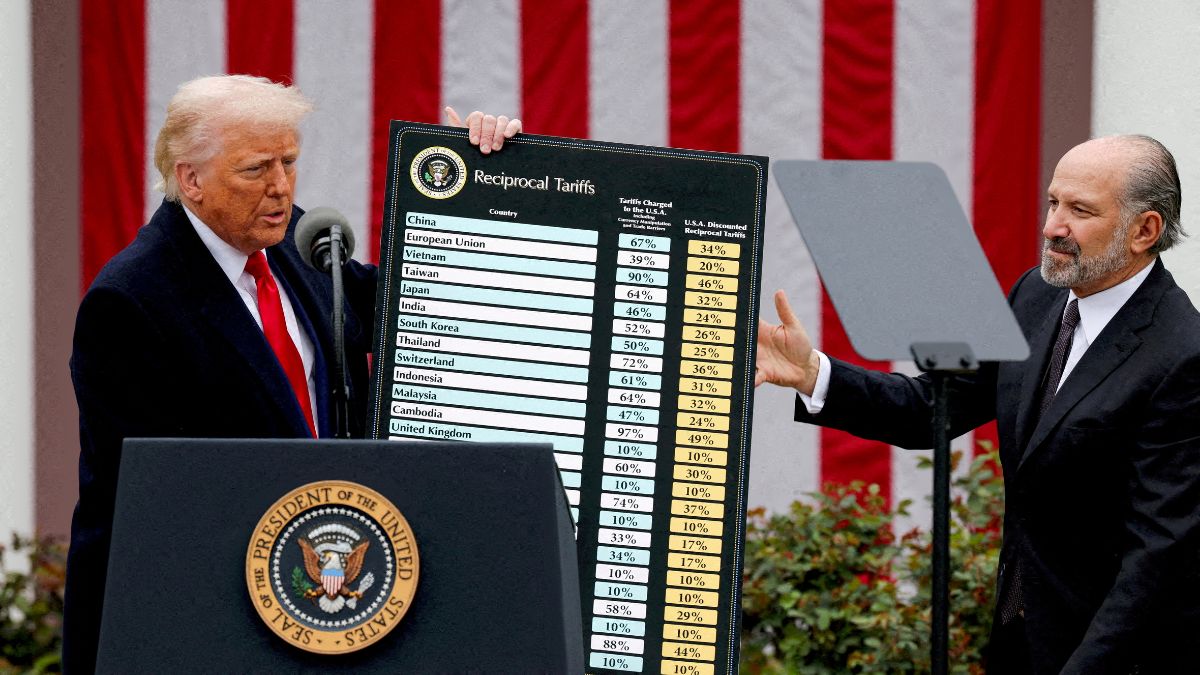General
As US President Donald Trump introduced high tariffs on key allies like India and South Korea, experts continue to warn that these tariffs would take a major toll on Americans, who will end up paying high prices for essential goods. A latest report from Yale University shows that Americans are set to pay a heavy price for Trump’s trade policies.
It is pertinent to note that the report was released on the day the US president announced 25 per cent tariffs on Indian imports and went on to threaten additional penalties for buying Russian oil, gas and military equipment. As per the report, the US tariffs implemented by the Trump administration are estimated to cost an average short-run income loss of about $2,400 per American household.
STORY CONTINUES BELOW THIS AD
This will be due to the higher prices on consumer goods. The report assumes that the Federal Reserve does not counteract the inflationary effects, so the income loss mostly reflects higher prices rather than nominal income reductions. What makes the matter concerning is that the Trump tariff led to an average effective tariff rate of 18.4 per cent on affected products, which is the highest the US has seen since the 1930s.
How Americans will end up paying the price
The jump in average effective tariff would lead to an increase of about 1.8 per cent in the short term across the economy, the Yale report warned. Interestingly, the research argued that the impacts of the Trump tariffs are unequally distributed among American households.
Households in the lowest income bracket face a burden approximately three times greater (about $1,300 loss) as a share of income compared to the wealthiest bracket, whose losses average around $5,000. Not only this, but certain product categories experience especially steep price increases. Clothing and textiles see short-run price rises of 40 per cent for leather goods (like shoes and handbags), 38 per cent for apparel, and 19 per cent for textiles.
Meanwhile, food prices could go up by 3.4 per cent, with fresh produce initially 7 per cent more expensive. Motor vehicles increase in price by roughly 12.3 per cent in the short run, adding about $5,900 to the cost of a new car on average. The researchers raised an alarm about the wide-ranging consequences of the Trump tariffs.
Beyond prices, the tariffs and the retaliatory measures that are presumed to be followed would lower the US Gross Domestic Product (GDP) growth by about 0.5 percentage points in 2025-2026. Not only this, unemployment is predicted to rise by 0.3 percentage points in 2025 and further in 2026, with an estimated loss of 500,000 payroll jobs by the end of 2025.
STORY CONTINUES BELOW THIS AD
A separate analysis conducted by JP Morgan confirmed that the tariffs contribute to inflation, slower consumer spending and put pressure on the American GDP. The tariffs also represent a large federal revenue source, but at the cost of economic growth and consumer welfare. One study estimates Trump’s tariffs will raise federal revenue by $167.7 billion in 2025 but will reduce US GDP and impose an average tax increase of nearly $1,300 per household that year.
How Trump’s tariffs are already impacting Americans
While most of the tariffs threatened by Trump have been paused, Americans are facing the wrath of Trump with his decision to impose tariffs on particular commodities and goods such as automobiles and steel. The Congressional Budget Office (CBO), the independent US fiscal watchdog, warned that the tariffs would shrink the size of the US economy relative to how it would perform without them.
Interestingly, they also pointed out that the additional revenues generated from the tariffs will be more than offset by the revenue lost due to the Trump administration’s tax cuts over the next decade.
One of the standout impacts of Donald Trump’s trade war, so far, has been to increase US goods imports, which completely goes against his agenda of reducing the trade deficit. This increase in imports has been because American firms stockpiled supplies in advance out of fear that the tariffs would increase the prices of their desired goods.
STORY CONTINUES BELOW THIS AD
US exports, on the other hand, have seen only a modest increase amid the chaos. Ultimately, the net result is that the US goods trade deficit has widened, not fallen. These price increases and economic disruptions confirm that the tariffs are directly “draining American wallets” by raising living costs, disproportionately impacting lower-income families, causing job losses, and slowing economic growth in 2025.

